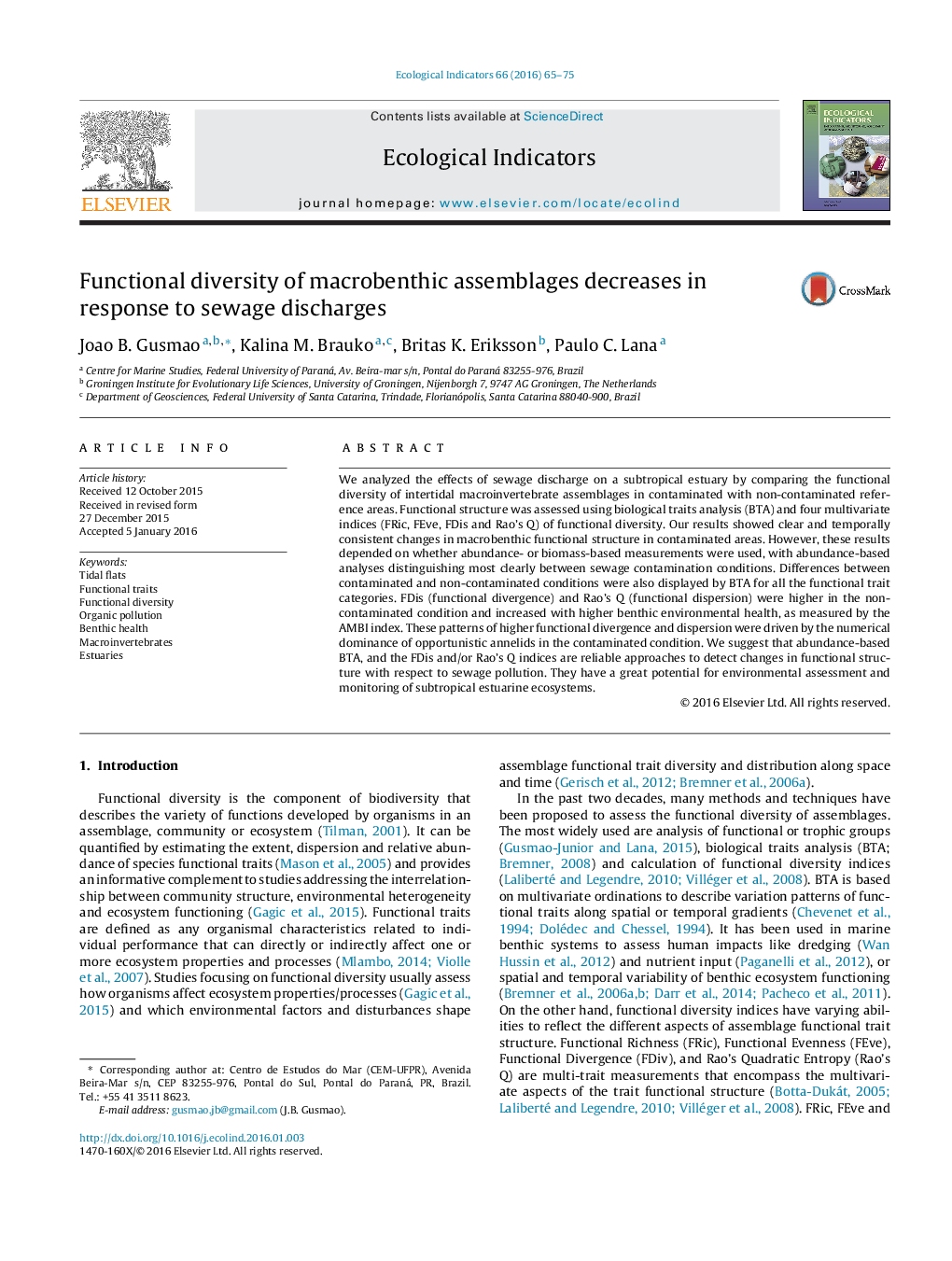| Article ID | Journal | Published Year | Pages | File Type |
|---|---|---|---|---|
| 6293407 | Ecological Indicators | 2016 | 11 Pages |
Abstract
We analyzed the effects of sewage discharge on a subtropical estuary by comparing the functional diversity of intertidal macroinvertebrate assemblages in contaminated with non-contaminated reference areas. Functional structure was assessed using biological traits analysis (BTA) and four multivariate indices (FRic, FEve, FDis and Rao's Q) of functional diversity. Our results showed clear and temporally consistent changes in macrobenthic functional structure in contaminated areas. However, these results depended on whether abundance- or biomass-based measurements were used, with abundance-based analyses distinguishing most clearly between sewage contamination conditions. Differences between contaminated and non-contaminated conditions were also displayed by BTA for all the functional trait categories. FDis (functional divergence) and Rao's Q (functional dispersion) were higher in the non-contaminated condition and increased with higher benthic environmental health, as measured by the AMBI index. These patterns of higher functional divergence and dispersion were driven by the numerical dominance of opportunistic annelids in the contaminated condition. We suggest that abundance-based BTA, and the FDis and/or Rao's Q indices are reliable approaches to detect changes in functional structure with respect to sewage pollution. They have a great potential for environmental assessment and monitoring of subtropical estuarine ecosystems.
Keywords
Related Topics
Life Sciences
Agricultural and Biological Sciences
Ecology, Evolution, Behavior and Systematics
Authors
Joao B. Gusmao, Kalina M. Brauko, Britas K. Eriksson, Paulo C. Lana,
